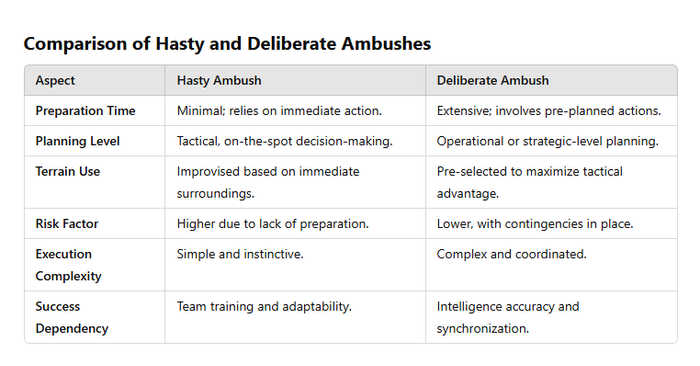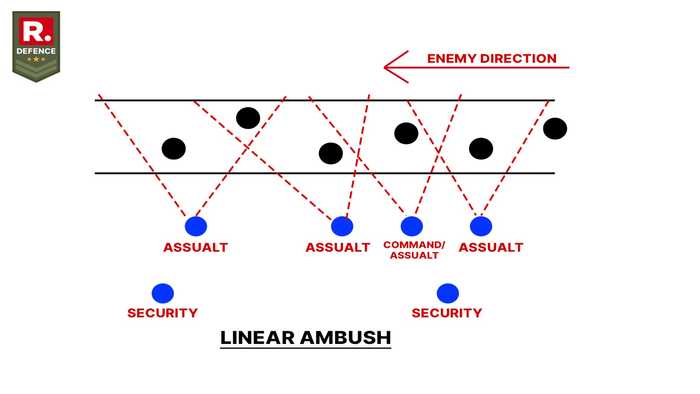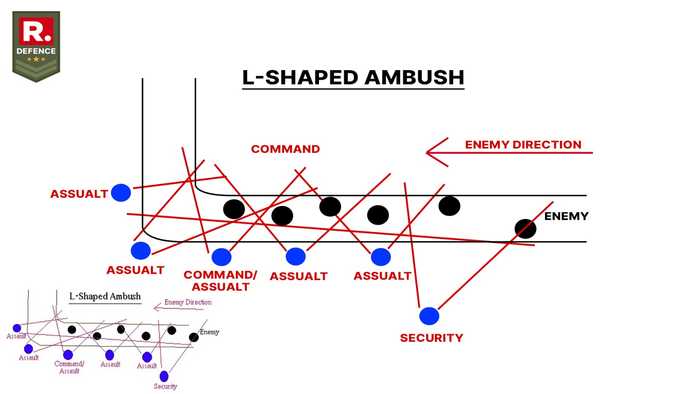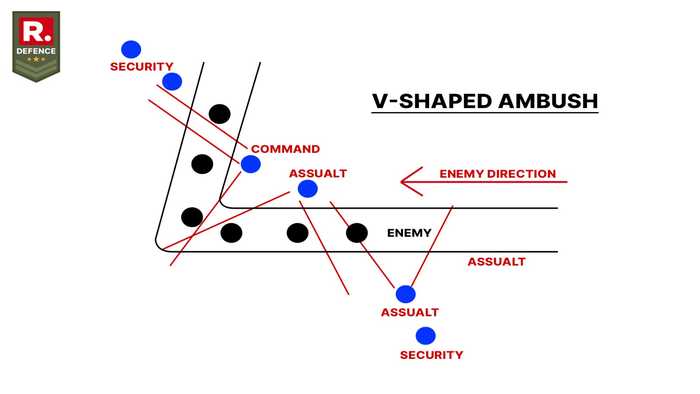Published 23:45 IST, November 15th 2024
Breaking Down Indian Army’s Ambush Tactics in Terrain-Driven Warfare in Kashmir and the Northeast
Ambush tactics are central to the Indian Army’s counterinsurgency operations in both Kashmir and the Northeast, with strategies evolving according to geography.
- Defence
- 4 min read
Indian Army's Ambush Tactics in COIN Ops
New Delhi, India - Ambush tactics have been a critical component of the Indian Army's counterinsurgency operations (COIN) in both Kashmir and the Northeast. These strategies leverage terrain, surprise, and precision to neutralize adversaries, including terrorist groups and insurgents. While the overarching principles remain consistent, the execution and adaptation of these tactics vary significantly between the two regions due to differences in geography, insurgent strategies, and operational challenges.
Ambush tactics fall into two broad categories based on the time available for preparation and the operational intent: Hasty Ambushes and Deliberate Ambushes. Both are fundamental to military strategy, but their execution and objectives differ significantly.
Hasty Ambush
A rapidly executed ambush is initiated when a patrol unit unexpectedly encounters an enemy force and has the element of surprise. These are time-sensitive and require minimal preparation time. Hasty Ambushes rely on the team's training and instincts.

These ambushes are adaptable to sudden encounters in dynamic operational environments. Execution depends on the readiness and discipline of the patrol unit.
Advantages:
- Capitalizes on unanticipated opportunities.
- Leverages the enemy’s lack of preparedness.
Limitations:
- Higher risk of mistakes due to the lack of detailed planning.
- Limited scope for reinforcements or contingency actions.
Example Use:
A Quick Reaction Team (QRT) in Kashmir encountering terrorists during a patrol might quickly establish a hasty ambush to neutralize the threat before it escapes.
Deliberate Ambush
A carefully planned and coordinated attack is set up in advance to intercept and engage an enemy force at a specific location and time.
-1731683436379.webp)
These ambushes involve reconnaissance, site selection, and preparation well in advance. Detailed planning ensures that every element is synchronized. These are designed to trap the enemy in a prearranged kill zone.
Advantages:
- High success rate due to preparation and coordination.
- Allows integration of multiple force elements and advanced equipment.
Limitations:
- Relies on accurate intelligence; any deviation by the enemy can render the ambush ineffective.
- Time-intensive and resource-heavy.
Example Use:
Operation Sarp Vinash (2003): The Indian Army used deliberate ambushes to flush out heavily armed militants entrenched in the Pir Panjal Range of Kashmir.

1) Linear Ambush
Attackers align parallel to the enemy’s route, targeting a convoy or column with maximum firepower along its length. Open areas like roads, trails, or pathways with clear visibility.

Linear Ambush requires a simplistic setup and execution. These are effective for engaging multiple targets simultaneously.
However, these offer a limited element of surprise from the sides and can prove ineffective in dense vegetation or obstructed terrain.
Use in Operations
In Kashmir, linear ambushes target infiltrators or small terrorist groups using roads or trails in rugged mountain passes.
In the Northeast, this tactic is applied along trails near riverbanks or open areas to ambush insurgent movements.
2) L-shaped Ambush
One firing line runs parallel to the enemy’s movement, while another runs perpendicular, creating a lethal crossfire. L-shaped ambushes are effective in intersections, river bends, or chokepoints.

This tactic offers enfilade fire along the column and confusion from multidirectional attacks and can be adapted to varied terrains.
However, these ambushes require precise coordination to avoid gaps in fire coverage.
Use in Operations:
In Kashmir, these are employed at high-altitude passes to intercept militants moving between hideouts.
In the Northeast, L-shaped ambushes trap insurgents in jungle clearings or intersecting trails.
3) V-shaped Ambush
Attackers form a “V,” channelling the enemy into the apex, where concentrated fire inflicts maximum casualties. Narrow valleys, gorges, or funnel-like areas with dense vegetation offer some of the best terrain for carrying out such ambushes.

V-shaped ambushes are highly effective in trapping and neutralizing adversaries. Such an ambush creates a lethal crossfire at the apex.
However, the execution of such ambushes depends on precise coordination. Furthermore, they are vulnerable if detected prematurely.
Use in Operations:
In the Northeast, dense forests and confined spaces make V-shaped ambushes effective against insurgent groups.
In Kashmir, this formation is less common but used in mountain passes with restricted enemy movement.
Comparison: Kashmir vs. Northeast Operations
In Kashmir, ambushes target small groups of terrorists infiltrating from Pakistan-occupied Kashmir (PoK) or moving between hideouts. Rugged and open terrain demands well-concealed, static ambushes, often supported by advanced surveillance tools such as UAVs and thermal imagers.
-1731685210094.webp)
In the Northeast, insurgents are ambushed during transit or while transporting logistical supplies. The region’s dense forests necessitate dynamic and adaptive ambush tactics, with operations often stretching over extended periods.
Ambush tactics remain a crucial element in India’s counter-insurgency strategy. While the terrain, operational requirements, and adversaries vary between Kashmir and the Northeast, the flexibility and precision of these tactics continue to secure an upper hand in neutralizing threats. The Indian Armed Forces’ expertise in employing these formations underlines their strategic importance in ensuring national security.
Updated 23:45 IST, November 15th 2024